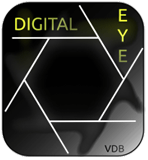Back to my roots (analogue photography with an asahi pentax ES)
It all started with the 35mm analogue camera of my dad. It has been laying around since film became less mainstream and especially because my father had sold his dark room equipment. But a couple of years ago I got my hands on some equipment, in the photo club we started some workshops about development too. so I got the drive back to use film now and then. It has since the beginning teached me to look first, and think about what picture I want to see. Film has no delete or “I’ll just take 300 shots to get one right one” possibility.
His set consisted of a pentax asahi ES, a takumar 1:1.4/50 and a takumar zoom 1:4/45-125 lens and a flash: braun 370 BVC.
The camera was release around 1972, It was some kind of hybrid camera between the classic full mechanical camera and the coming fully battery operated camera. ES stands for electronic shutter. It means this camera needed a battery to power some functions like the shutter, and light-meter. But with the battery removed you can also use the camera fully mechanical. You can find the battery in front of the camera, it takes a 6V 4SR44/PX28A battery. On the upper side the of the body a button could be pressed, using the light meter in the viewfinder to show the battery’s power.
The motherboard inside was a mass produced and easily repairable type, most other cameras had more proprietary circuitry which weren’t easy to repair.
The camera itself was compact enough to be very comfortable holding. The lever which you use to advance the film was not to sturdy nor soft to handle. it’s placement combined with the compact body made it very easy to reach and use.
The lenses used an M42 screw mount. These SMC (super multi coated) takumar lenses were knows for the low flares and the way they captured colours. Some even claimed that a lens hood was not needed because of the super multi coating.
The lenses also had open-aparture metering it made it easy to focus because the viewfinder was always bright. But older lenses didn’t have this system but still the camera could handle this with stop down metering. The switch was near the lens mount. To activite the meter you just pressed the shutter button partially.
The lightmeter doesn’t work in manual mode, so it was a good way to learn to manually meter light, and learn to see light.
The electronic shutter worked stepless from 8 sec to 1/1000 sec . when used in automatic mode, if it needed 1/326 to get the exposure right, it just did it.
Shutter priority already existed with the Canon F1 but the big difference here was the Pentax camera could do this from the body and it worked with nearly alle lenses. Canon on the other hand needed a new lens mount because their system was within the lenses.
some specs with thanks to:
http://www.pentaxforums.com/camerareviews/pentax-es.html
| Asahi Pentax ES | |||
| Also marketed as Honeywell Pentax ES |
Year introduced 1972 |
Year discontinued 1973 |
Mount M42 |
| Automatic aperture stop down Yes |
Metering Open aperture, centerweight |
Meter range EV 1 to 18 |
ISO range 20 to 1600 |
| DX ISO range No DX coding |
Exposure modes Av, Manual, B |
Exposure compensation 1/2x, 2x and 4x |
Exposure memory lock No |
| Shutter speeds (auto) 8s – 1/1000s (stepless) |
Shutter speeds (manual) B, 1/60 (X), 1/125, 1/150, 1/500, 1/1000s |
Shutter speeds (mechanical) B, 1/60 (X), 1/125, 1/150, 1/500, 1/1000s |
Self timer No |
| Mirror lock-up No |
Auto bracketing No |
Multiple exposures Yes |
Winder Ratchet type rapid wind lever. 10° pre-advance and 160° advance angle |
| Flash hot shoe Yes |
Built-in flash No |
TTL/P-TTL flash No |
Flash sync speed FP and X terminals – 1/60s |
| Flash exposure comp Not applicable |
Viewfinder 0.89x (with 50mm lens), 93% coverage |
Viewfinder type Pentaprism finder with Fresnel lens + microprism |
Diopter correction No |
| Exchangeable screen No |
Depth of field preview Yes |
Image size 24 x 36 mm |
Battery 6V, Eveready #544 |
| Battery grip/pack No |
Size (W x H x D) 143 x 98 x 50mm (without lens) |
Weight 678g |
|
The manual can be found here: http://c758710.r10.cf2.rackcdn.com/files/support/manual/531_1314745096-1754946904_manual.pdf
The flash sync speed was at 1/60 sec. For flash there was a braun 370 BVC flashgun in the bag. It could not be used above the camera because it has no hotshoe connection, it can be used on a grip beside the camera or away from the camera with a long enough wire. I could make it work wirelessly using a cheap hotshoe wit cable connection and put the hotshoe on a cactus transceiver, the flash can only work manually in this system but that is not a real drawback, the good part is I can use this old flashgun together with my new speedlights.
The flash takes 4 standard AA batteries.
It has a disc to configure the asa(iso), diaphragm, a testbutton, ready light, and a switch for manual settings, computer or variopower. Computer calculates the flashpower needed. Variopower is for when you need very fast or powerful flashes.
On the flash there is a reflector which directs the light straight forward but you can easily click it down so the flashlight is more spread.
The manual can be found here: https://www.gebruikershandleiding.com/Braun-370BVC/preview-handleiding-22278.html
Some of my own pictures shot with the pentax and developed myself.
In all, it’s a great camera, I enjoyed it and still do.
—
Wim















